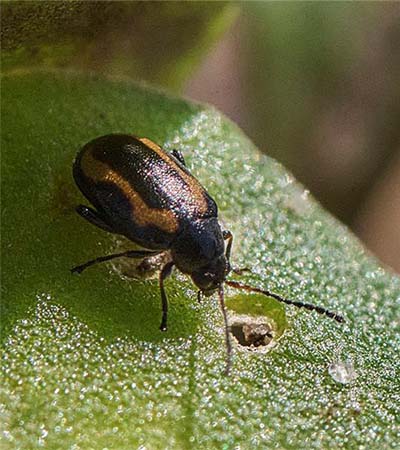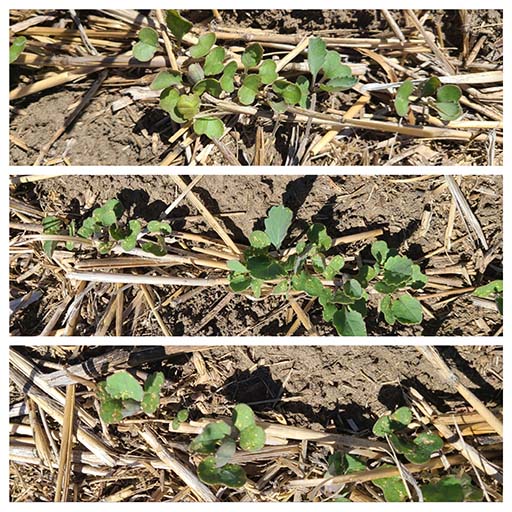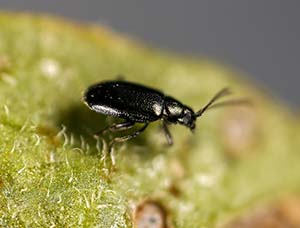Bug of the Month
We know some things, but there is lots to learn

Musings by Dr. Hector Carcamo, AAFC-Lethbridge
The two main species of flea beetle pests in canola are the crucifer (P. cruciferae) and the striped flea beetles (Phyllotreta striolata). Adult flea beetles overwinter in leaf litter in shelter belts, field margins and forest groves. Adults fly out of the overwintering sites when daily maximum temperatures exceed 14°C but can also disperse into nearby canola fields by walking or hopping.
The striped flea beetle is common in the more humid regions of the prairies and the crucifer species (shiny black) is dominant in southern Alberta. An important difference between these species is that the striped flea beetle, unlike the crucifer, is not controlled well with neonicotinoid insecticides. Also, they differ in emergence times: the striped species emerges from its overwintering sites earlier than the crucifer species.
Thus, in the south, planting early may allow canola to escape the peak and avoid major damage; but the opposite may happen in the humid prairies! In a cold spring like 2021, delays in canola germination and plant growth may put the plants at risk of damage from the crucifer species. However, stands planted very early that have more than two true leaves and growing vigorously when the flea beetle emergence peaks, should be less vulnerable to damage and yield loss.

The economic threshold for flea beetle damage in canola is 25% of surface damage on the cotyledons. This subjective rating is easy to overestimate. This threshold was validated in a recent study throughout the prairies that examined insecticide management strategies. The study lead by Dr. A. Costamagna (University of Manitoba) showed that yield protection from insecticides, seed treatment or foliar chemicals, was highly variable, but in general foliar applications were not as effective as seed treatments in protecting yield.
An ongoing related study by the University of Manitoba and AAFC researchers and Farming Smarter (Canola Council-AAFC Agri-Science Cluster) is examining the interactions of seeding rate and insecticide strategy. So far, the results from the Lethbridge area suggest a benefit of targeting higher plant densities. Other objectives of this study are to investigate potential predators of flea beetles during the canola seedling stage and to quantify landscape parameters that could influence flea beetle abundance and distributions.

Flea beetles are an important canola pest and in the long term there is a need to develop local forecasting methods. Knowing if you will have flea beetles at high pest populations at seeding time to make a decision about seed treatments requires a lot of information under a tight timeline: population numbers at the end of the previous summer, fall conditions that may influence feeding (they need to get fat before winter), overwintering survivorship (soil moisture and temperatures, snow cover, duration of winter), and likely landscape factors around the field where you choose to plant your canola. There is no shortage of research questions.
